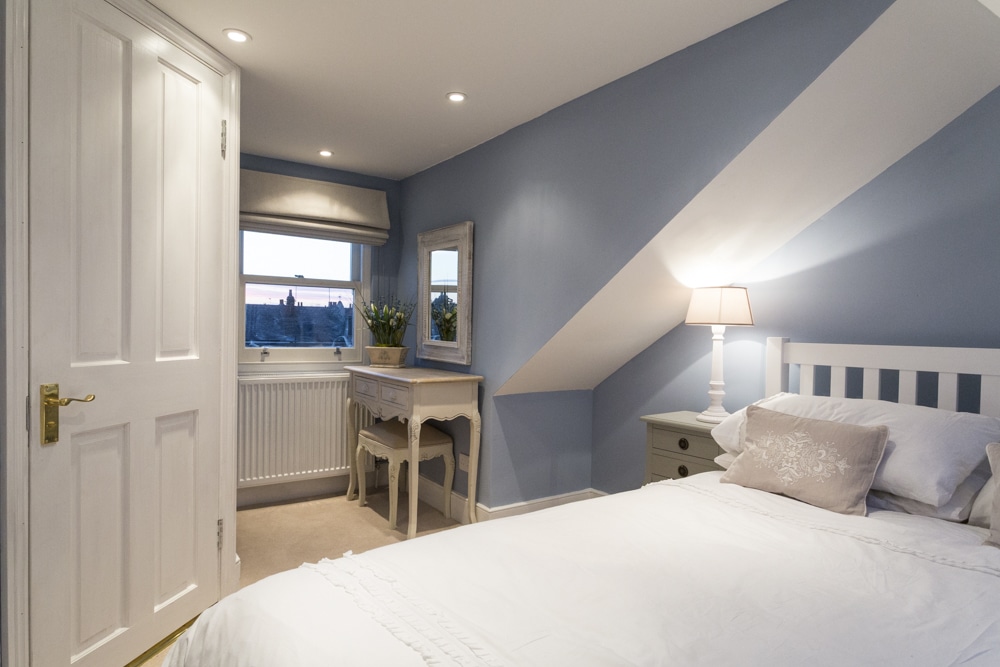
Like other areas of your home, the loft holds untapped potential. Whether you want to add a bedroom, an office, or a quiet retreat, converting a loft would be one of the most intelligent solutions for increasing living space and adding value to the property. Firstly, however, understanding the variegated loft conversion types is important while keeping in mind the one that suits the house in question.
Here is a clear guide to the most preferred options.
Dormer Loft Conversion
A functional box-type addition to maximize space.
The most widely undertaken choice in the UK, a dormer loft conversion adds a vertical extension to your sloping roof. This increases head height and floor area, making it perfect for the creation of a full-size bedroom or home office.
Best for:
- Most terraced, semi-detached, and detached homes
- Families needing extra space quickly
Advantages:
- Excellent source of natural light
- Great for modern layouts
- Usually falls under permitted development
Velux (Rooflight) Loft Conversion
This is uncomplicated, cost-effective, and rather minimally invasive.
If your loft already has enough headroom, a Velux conversion is the easiest way to make it liveable. It keeps the original roof shape and simply adds rooflight windows (usually Velux-branded).
Best for:
- Steep roofs
- Tight budgets
Benefits:
- Quick install
- Minimal structural alteration
- No major planning permission required
Hip to Gable Loft Conversion
This space can be extended by straightening out the sloping roof.
This loft conversion transforms an angled hipped roof into a flat gable end. It is extending the ridge line to create internal space and can often be combined with a rear dormer for added effect.
Best for:
- Semi-detached and end-of-terrace houses with hipped roofs
Advantages:
- Harmonizes with the original house
- Generous addition of space
- Visually balanced exterio
Mansard Loft Conversion
Maximum space with an aesthetic touch.
A mansard conversion entirely changes the roof structure by having a flat roof and steeply pitched walls. Usually built to the rear of a property, it is well-suited for those looking for a completely new floor.
Best For:
- Urban homes with limited space
- Addition of en-suites, master bedrooms, or studios
Advantages:
- Adds huge usable space
- Good for period property
- Gives better returns
Note: This type of conversion typically requires planning permission due to the extensive alteration of the roof.
L-Shaped Dormer Loft Conversion
Houses are constructed in an L-shape with a rear extension.
The design is such that an L-shaped house can be created by joining one dormer to the main roof and another one over the extension.
Best for:
- Victorian and Edwardian terraces
- Houses with rear outrigger extensions.
Benefits:
- Two rooms may be incorporated.
- Ideal for en-suites or open-plan designs.
- It utilizes oddly shaped roofs.
Choosing the Right Loft Conversion
There are many different types of loft conversions. The one you choose will depend on:
- The shape of your roof and its height
- Planning restrictions in the area
- The goals for your space
- Your budget
At The Loft Conversions UK, we assist you in finding the best solution with a free assessment of your site. Our highly skilled designers and builders take care of everything: planning permission and everything down to the final touches.
Ready to Transform Your Loft?
Want to expand your personal space in your home without relocation? At The Loft Conversions UK, we make it easy to convert a loft that is currently unused into something really special within days.
We design and build all different types of loft conversions, custom-built to your property and your requirements. For me, all, from planning and design to completing construction and final finishing touch.
👉 Contact us today for a no-obligation consultation. Let’s bring your loft back to life!
